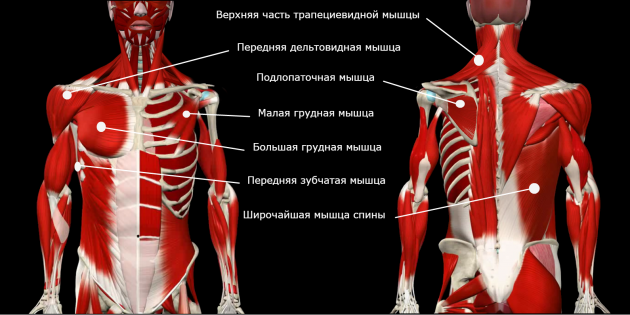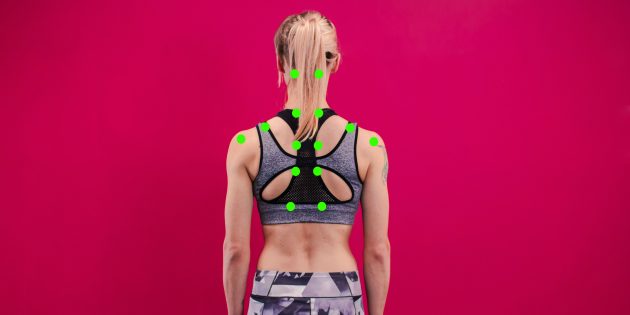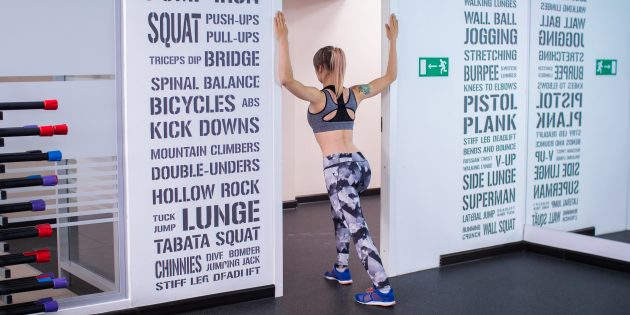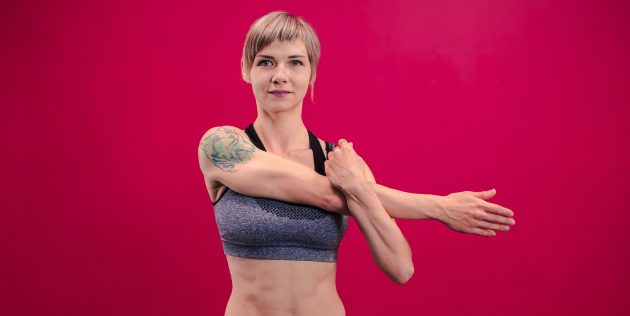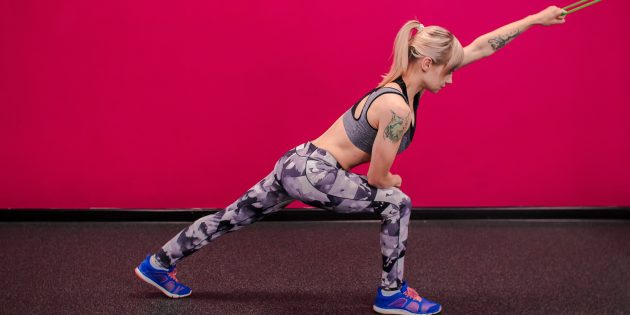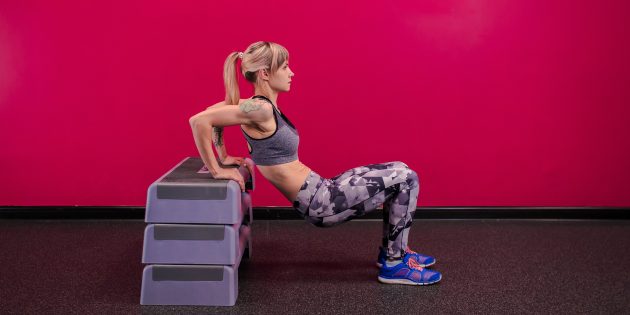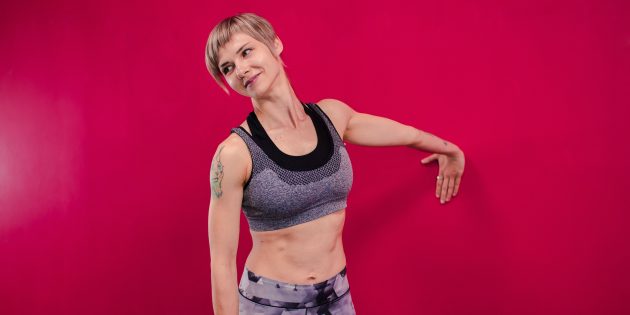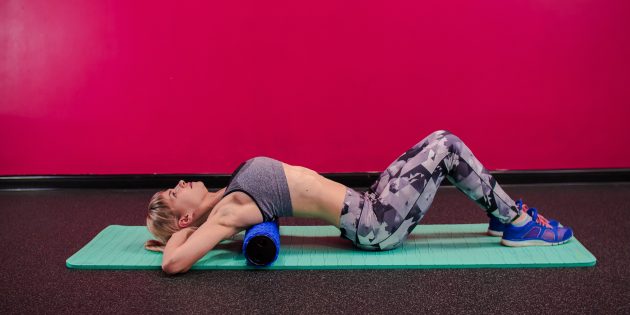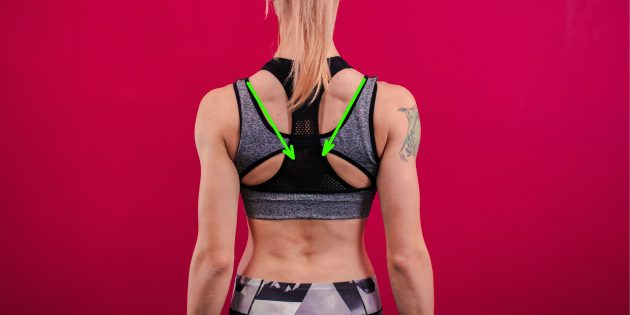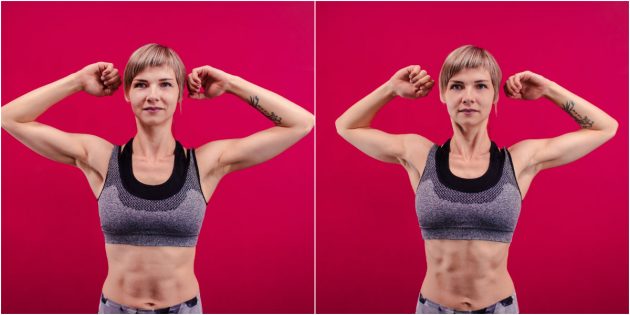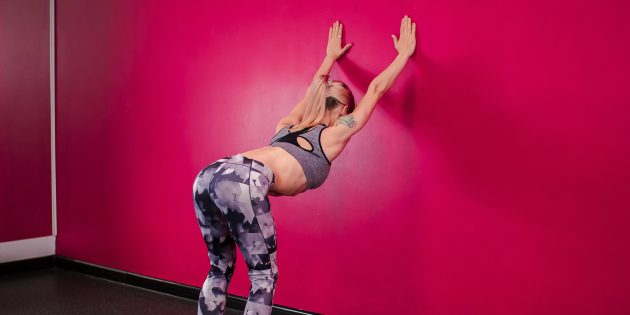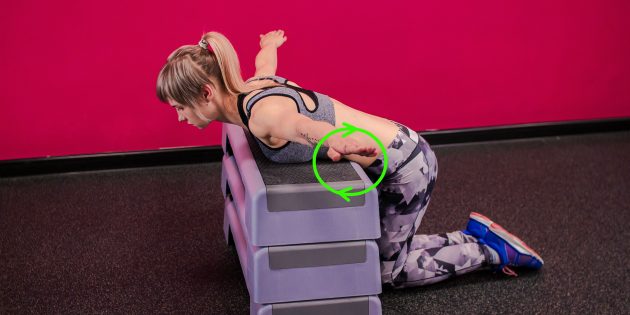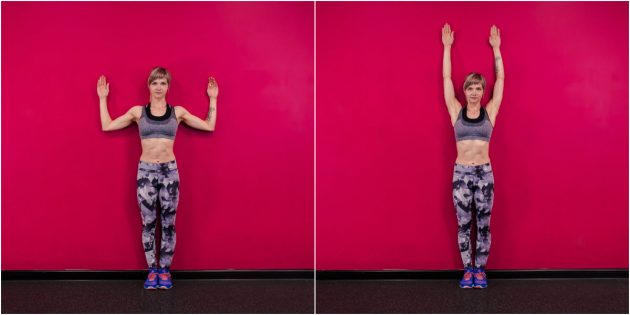Round shoulders are postural problems in which the shoulders protrude forward. This problem often occurs in people who work while sitting with their heads down at a computer, laptop, smartphone, or tablet, drive a car, carry or lift weights.
These conditions force a person to maintain a body position with their shoulders extended forward. As a result, the muscles get used to this position; the body retains it even at rest.
What happens to the muscles
When your shoulders are lowered and brought forward, some muscles shorten from constant tension, while others, on the contrary, stretch and become weak.
Read also: 8 Ways on How to Boost Your Immunity.
The photo below shows stiff muscles.
And here is a list of weak muscles.
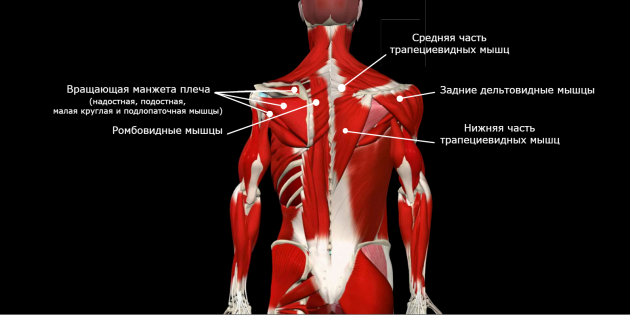
Painful areas
If you feel pain in the areas noted in the photo below, it may be due to the round shoulders.
How to determine if you have this problem
Two simple tests will help you figure out if you have this posture disorder.
Position of the palms
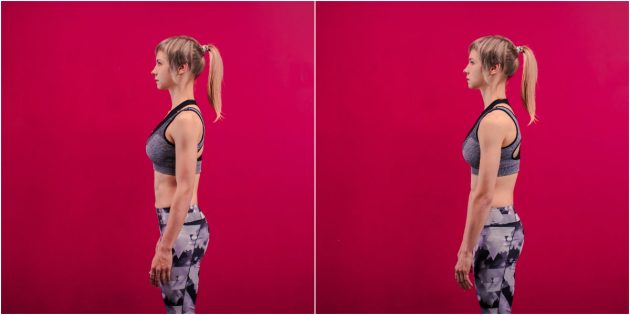
Stand up straight, relax your arms. Pay attention to the placement of the palms. If they point backward, then you have round shoulders.
Prone test
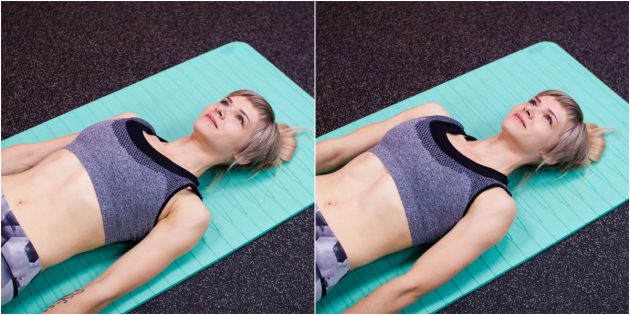
Lie on your back on the floor, relax. If your shoulders are not touching the floor, you have round shoulders.
How to fix round shoulders
Exercise at least twice a week for 20-30 minutes. It will take time to correct the usual position, but gradually your posture will return to normal.
Exercise smoothly and carefully. If you feel pain, consult a physical therapist.
Our exercises will include rolling on a massage ball, stretching, mobilization, and strength.
Rolling on a massage ball
Stiff muscles and overgrown fascia layers keep the shoulders in the wrong position. It is essential to relax rigid structures to correct posture. You will need a massage ball for this part of the exercise.
To roll properly, place the ball under the desired area and press it with your own body weight. Then roll out on the ball any areas that feel hard (if you feel pain, you are on the right track). Roll each area for 1 to 2 minutes, or until pain and stiffness go away.
Do not hold your breath while rolling on the massage ball, even when working on particularly hard areas. If it hurts a lot, move the ball off the painful area and roll it around the area.
You can roll out:
1. Pectoral muscles.
2. The front of the shoulders.
3. The back of the shoulders.
4. The place between the shoulder blades.
5. Serratus anterior muscle.
Stretching exercises
Hold each position for 30 to 60 seconds. You should feel a stretch in your muscles in every pose.
Stretching the pectoral muscles.
Place both forearms on the doorposts and push your body forward. You should feel a stretch in the front of your shoulders and chest.
Back shoulder stretch
Extend your arm towards the opposite shoulder and press it towards you with your other hand, stretching the shoulder’s back. Then repeat to the other side.
Lateral body stretch
For this exercise, you can use a low bar, expander, or loop.
Grasp the loop or bar with your left hand and lunge back with your left foot, stretching the left side of your body. The further the left leg goes, the better the left side of the body stretches. Then repeat to the other side.
Stretching the front of the shoulders.
Stand with your back to the bench, place both hands on it. Bending your elbows, lower yourself down. Make sure your elbows are pointing back. Feel the stretch in the front of your shoulders.
Fascial stretching of the upper limb
Place your palm on the wall just below the shoulder level and straighten your arm completely. Turn your head to the opposite side. You will feel a stretch in your fingers, forearm, and bicep. Then repeat in the other direction.
Stretching the upper trapezoid.
Tilt your head to one side. To increase the stretch, place your hand on your head and lightly press down on it. Then repeat to the other side.
Exercises to increase shoulder mobility
Hands-on the lower back
Place both hands behind your back and place them with their backs on your lower back, with one palm under the other. Connect your shoulder blades, lower your shoulders, and hold for 30 seconds. Repeat five times.
Stretching and rotating the shoulders.
Pick up a stick, sit on the floor, and put your elbows on a dais, palms facing you. Pull your torso back, stretching your shoulders. The forearms remain perpendicular to the floor. Hold for 30 seconds, then repeat three times.
Thoracic stretch
Lie on the massage roller, placing it under your thoracic spine. Place your hands behind your head and bend back. In this case, the pelvis is located on the floor; the lower ribs tend downward. Remain in this position for 30 seconds, then repeat three more times.
Strength exercises
If you have completed all of the above exercises, your shoulders have become more flexible, but this is only half the way. Strength training will help you strengthen your muscles and keep your shoulders in the correct position.
Reduction of the shoulder blades
Pull your shoulders back and down. You should feel the tension in the area of the shoulders and shoulder blades. Try to relax the rest of your muscles. Be gentle, and don’t overextend your shoulders.
Breeding elbows
Raise your arms to your head, point your elbows forward. Then turn your elbows to the sides and try to take them as far as possible. Hold this position for 5 seconds. Repeat the exercise 20 times.
Exercise against the wall
Place your hands high on the wall and press down on them. Bring your shoulders back and bring your shoulder blades together. Hold this position for 30 seconds, then repeat five more times.
Hand circles
Lie with your chest on a chair with your body parallel to the floor. Spread your arms on either side so that they are also parallel to the floor. Lower your shoulders and bring your shoulder blades together. In this position, circle your hands for 30-60 seconds.
Also read: Yoga: Tips to Start Practicing
Raising hands next to the wall.
Stand with your back against the wall, with your arms and shoulders touching it. Bend your elbows, first lift your forearms to a W-shaped position, and then your arms up. Throughout the exercise, keep your shoulders down and your shoulder blades drawn together. Repeat 10 times.
Do these exercises at least three times a week. If you don’t have enough time, you can split your workout into several parts and do them on different days.
After the first session, you will feel that it has become much easier to keep your shoulders in the correct position. And as the muscles and fascia get used to it, you will improve your posture.
Adapted and translated by Wiki Avenue Staff
Sources: Life hacker

